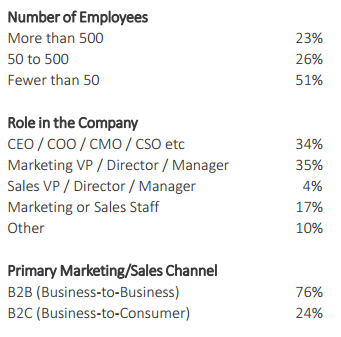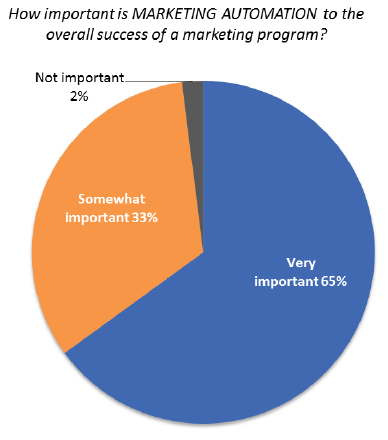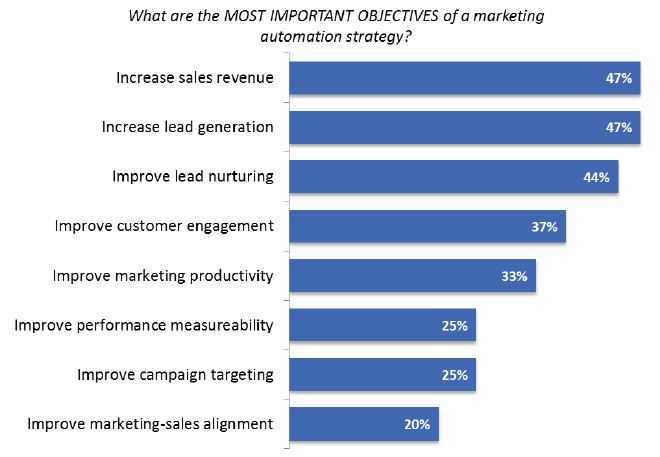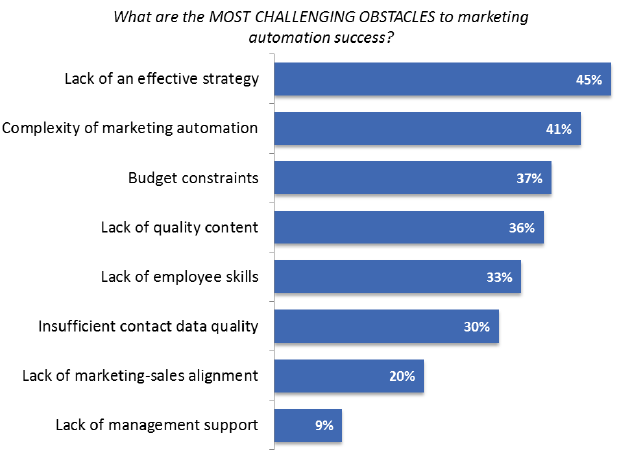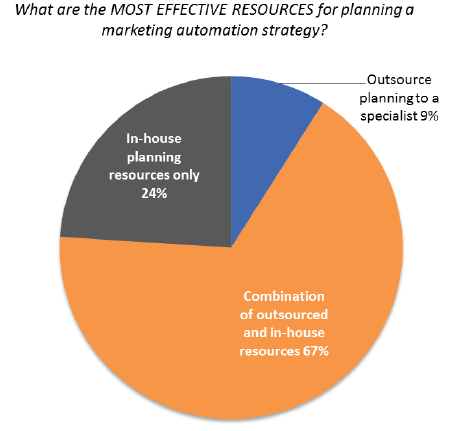Companies Cite Lack of an Effective Strategy as the Most Challenging Obstacle to Marketing Automation Success
Marketing automation refers to software that streamlines, automates, and measures marketing tasks and workflows so that companies can operate more efficiently and grow revenue faster. Marketing automation also refers to the tactics that enable marketers to nurture prospects with highly personalized and valuable content that will help convert prospects into customers.
Marketing automation is designed to replace manual and repetitive tasks—like emailing new prospects and customers, and emailing subscribers about new blog content. On the other hand, what challenges do marketing professionals/companies face when striving for marketing automation success? What does an effective marketing automation strategy look like?
Ascend2, a leading provider of Research-Based Demand Generation (@Ascend2research), delved into these questions with its latest monthly report, Marketing Automation Strategy: Survey Summary Report. Ascend2 benchmarks the performance of popular digital marketing strategies and practices using a standard questionnaire and research methodology.
The survey was conducted online from a panel of more than 50,000 American and international marketing, sales, and business professionals, representing an array of demographic roles, channels, and company sizes. [See Figure 1]
Listed below are some of the most important findings of the survey:
Companies are Increasingly Using Marketing Automation
Fifty-nine percent of the companies surveyed use marketing automation to some extent. [See Figure 2] Meanwhile, 34% are currently not using marketing automation but are planning to harness it in the future. Only 7% of the companies surveyed have no plans to use marketing automation now or in the future.
When asked how important marketing automation was to the overall success of their marketing program, two-thirds (65%) of companies said it was “very important” to the overall success of their marketing program. [See Figure 3]
Companies Cite Lack of Effective Strategies as a Hindrance to Marketing Automation Success
When asked to identify the most important objectives of their marketing automation strategy, increasing sales revenue (47%), increasing lead generation (47%), and improving lead nurturing (44%) emerged as the top objectives. [See Figure 4] “Surprisingly, improving marketing-sales alignment is a capability of but not a top priority for marketing automation,” noted the report.
As for successfully achieving objectives, 86% of the surveyed companies rated marketing automation as successful at achieving important objectives, like increasing sales revenue and lead generation. Of this percentage, 61% rated marketing automation as somewhat successful at achieving important objectives, and 25% rated marketing automation as very successful at achieving important objectives.
While the surveyed companies cited many challenging obstacles to marketing automation success, the most challenging obstacle was lack of an effective strategy. Almost half (45%) cited this as their most challenging obstacle. [See Figure 5] “While the complexity of marketing automation is also a top hindrance, the lack of management support is not,” the report noted.
The Majority of Companies Outsource their Marketing Automation Strategy Planning
Seventy-six percent of companies outsource all or part of their marketing automation strategy planning, because the ability to strategize effectively is often not an expertise that can be found in-house. [See Figure 6]
The full report can be downloaded from Ascend2’s Monthly Research Series.
How does your organization plan its marketing automation strategy? Share some words of wisdom in the Comments below.
Marketing Digest Writing Team
Latest posts by Marketing Digest Writing Team (see all)
- How Taco Bell Struck Gold with Its Memorable Viral Marketing Campaigns - September 15, 2015
- Salesforce Marketing Cloud Releases New Instagram Marketing Tools - September 12, 2015
- Chrome Begins Pausing Flash Ads by Default to Improve User Experience - September 3, 2015


